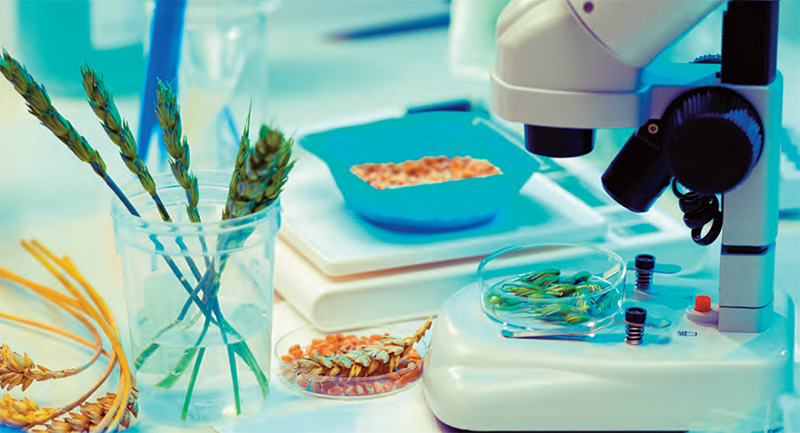


STA - ISSN 2752-6860 - © ISTE Ltd
Food Science and Technology publishes articles in the fields of food sciences and food processing engineering. It includes the following themes:
- Food science, food materials science
- Farm-produce processes and sustainable development
- Agricultural and food method technology
- Packaging
- Food engineering, functional food, transitional products, ingredients
- Modeling and food method controlp
Please download the layout instructions (for the Chemistry papers): instructions
Merci de télécharger les consignes de mise en page (pour les articles de Sciences Chimiques) : consignes
Science et technologie des aliments publie des articles en français dans les domaines des sciences des aliments et du génie des procédés alimentaires. Elle couvre en particulier les thèmes suivants :
- science des aliments, science des matériaux alimentaires,
- génie des procédés agroalimentaires
et développement durable,
- technologie des procédés agricoles et alimentaires,
- emballage,
- ingénierie des aliments, aliments fonctionnels,
produits intermédiaires, ingrédients,
- modélisation et contrôle des procédés alimentaires.
The black spot or black stain is a defect visual current among the shrimps. It affects the aesthetic quality as well as the commercial value negatively. The consumers are more and more distrustful on the food products containing chemical additives of which the sulphite of sodium (MBS) whereas it is the best option to control the black spot among the shrimps. The objectives of this research are to identify product of treatment again against the black spot, to value the quality of the shrimps treated (residual of sulphite and sensory quality) and to value the efficiency of the treatment products in terms of cost and convenient of use. Of this fact, the alternative products tested in the setting of this research are the citric acid, the Vitamin C and the Crustacel-Z (a product cocktail). An analysis of the data has been made. For the results, according to the ANOVA, the averages estimated of level of black spot vary from 0 to 0,505 with value of (F = 356,01; p <0,0001) for the different treatments. The difference between the averages of level of black spot of the different treatments is meaningful. An efficiency on the prevention of the black spot of the shrimps with the treatment Vitamin C similar to the MBS treatment has been noted after three months of storage. In short, the Vitamin C is easy to use. It is not corrosive and don’t drag a danger on health and the security of people manipulating it.
Consumption of high-fiber foods, such as whole-grain bread, reduces the risk of many diseases. However, the consumption of white bread is still dominant in households. It is important to understand the causes of this contradiction and to find ways to encourage fiber consumption. To this end, the objective of this work was to evaluate the effect of wheat bran granulometry and concentration on the organoleptic quality of bread and its acceptability by the consumer. Soft wheat bran, with one of three average particle sizes (approximately 1, 1.4 or 1.8 mm) and one of three concentrations (7, 14 or 21%), was mixed with white soft wheat flour, in a factorial experiment. The nine breads (receiving the nine treatments), in addition to a control (without added bran), were analyzed for moisture, specific volume, browning index, and porosity. These ten bread types were presented to 106 people of different ages, genders and origins, to rate them for appearance and taste (after blindfolding), according to a completely randomized design. We used Pearson’s correlation test to compare quantitative variables, and ANOVA or Kruskall-Wallis test to compare treatments. This study revealed that increasing bran concentration caused a significant increase in bread crumb moisture; whereas increasing bran granulometry caused a significant increase in bread crumb cell size and a significant decrease in bread specific volume. Based on visual judgment, respondents expressed a strong preference for bread rich in wheat bran, with a light brown crumb. However, after tasting, bread appreciation was negatively affected (P<0.05) by increasing bran concentration. Visual appreciation of bread was significantly higher in women than in men. Our results suggest that there is an awareness of fiber importance that has not yet translated into a preference. A flour containing 7 to 14% bran with a particle size of 1.4 mm seems to be the best, meeting bakery requirements and satisfying consumer preference.
Editorial Board
Editors in Chief
Jack LEGRAND
GEPEA - Université de Nantes
jack.legrand@gepea.univ-nantes.fr
Gilles TRYSTRAM
AgroParisTech
gilles.trystram@agroparistech.fr
Co-Editors
Bernard CUQ
SupAgro Montpellier
cuq@supagro.inra.fr
Frédéric DEBEAUFORT
AgroSup Dijon
debeaufo@u-bourgogne.fr
Lionel MUNIGLIA
Université de Lorraine
lionel.muniglia@univ-lorraine.fr